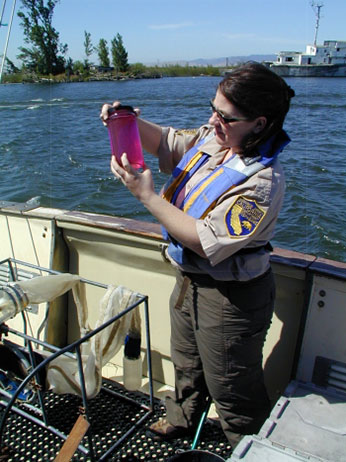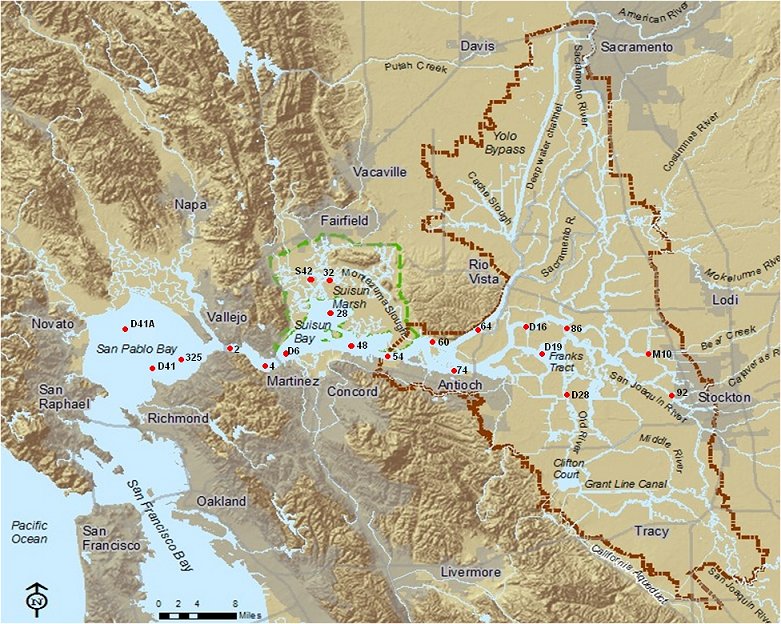Project Overview

The Zooplankton Study has estimated the abundance of zooplankton taxa since 1972 as a means of assessing trends in fish food resources from eastern San Pablo Bay through the eastern Sacramento-San Joaquin Delta and Suisun Marsh. The study also detects and monitors zooplankton recently introduced to the estuary and determines their effects on native species. Under the auspices of the Interagency Ecological Program for the San Francisco Estuary and mandated by Water Right Decision D-1641, the Zooplankton Study is part of the Environmental Monitoring Program and is conducted by the California Department of Fish and Game (CDFG), California Department of Water Resources (CDWR), and the United States Bureau of Reclamation. The Zooplankton Study currently samples 19 stations monthly, including 17 fixed stations and 2 floating entrapment zone stations located at bottom electrical conductivity (EC) of 2 and 6 mS/cm. Three additional stations are sampled in Carquinez Strait and San Pablo Bay during high outflow when surface EC is less than 20mS/cm. Sampling is conducted by CDWR in conjunction with discrete water quality monitoring Three gear types are used for targeting different sized zooplankters: 1) a pump for sampling microzooplankton <1.0 mm long, including rotifers, copepod nauplii, and adult copepods of the genus Limnoithona, 2) a modified Clarke-Bumpus (CB) net for sampling mesozooplankton 0.5-3.0 mm long, including cladocerans, copepodids (immature copepods), and adult copepods, and 3) a macrozooplankton net for sampling zooplankton 1-20 mm long, including mysid shrimp. Samples are fixed in formalin and transported to the CDFG Laboratory in Stockton for processing.
Stations Map / Sampling Sites
